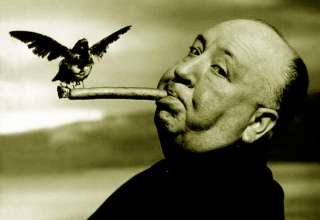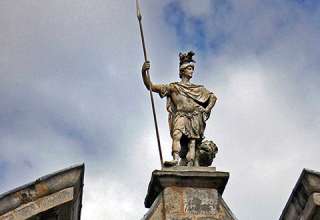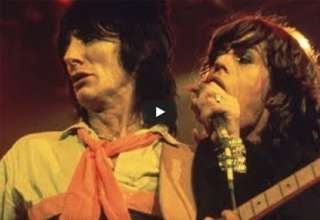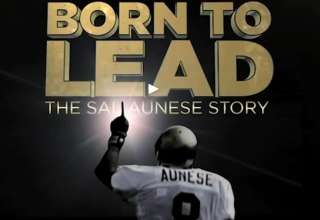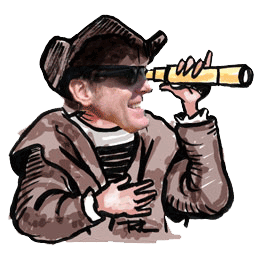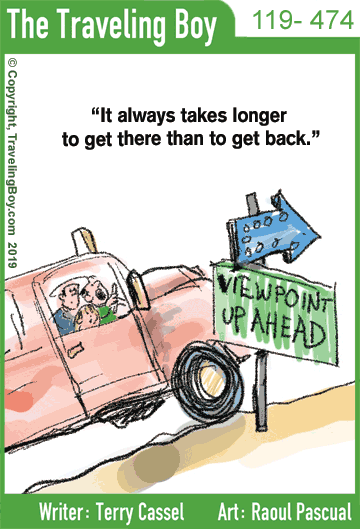
This is a continuation of a three part series about Charlie Chaplin. For Part 1, visit Charlie Chaplin: The Man and the Genius.
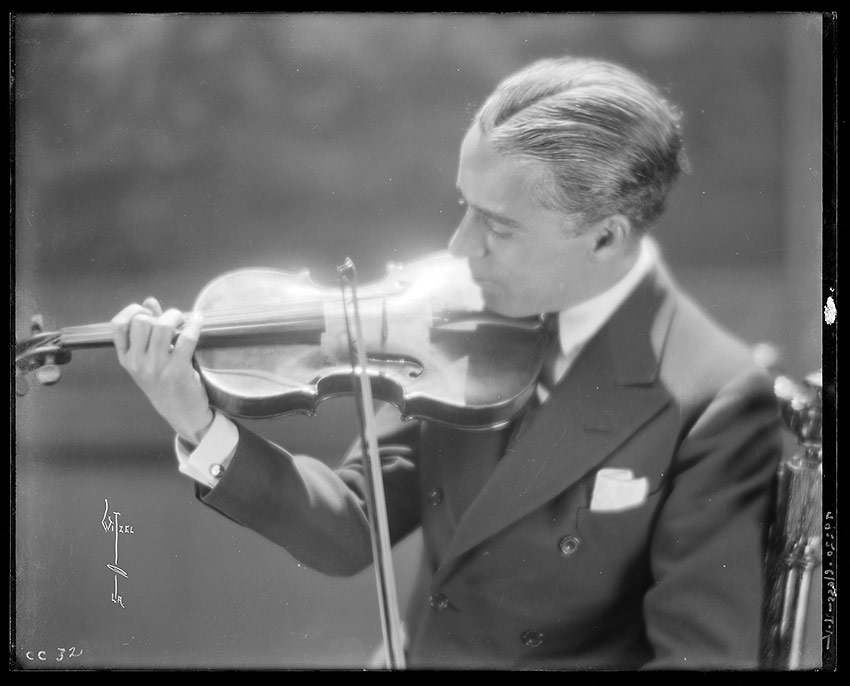
To cineastes, Chaplin is more than the man who created the iconic Little Tramp, but one of the greatest filmmakers of all-time. Legendary film critic and father of American auteurism, Andrew Sarris, places Chaplin in his pantheon of the 14 most influential American film directors in his still ground breaking book, The American Cinema: Directors and Directions 1929–1968,’ which changed the course of film criticism. As head of his own studio, Chaplin had a unique approach in translating his ideas into visual form, virtually never shooting from a working script. Often times he would simply sit on the set, surrounding by his cast, waiting for an idea to come. Occasionally the idea would not come, and he would dismiss the cast for the day, still with full payment. This resulted in long periods of absence on the silver screen. In his autobiography, the only mention of his shooting style was long-shot for comedy, close-up for tragedy, in which he embraced both in his stylistic signature; the essence of the duality of the Little Tramps films.
(Read more about auteurism, and Richard Brody’s stunning memorial to Andrew Sarris.)
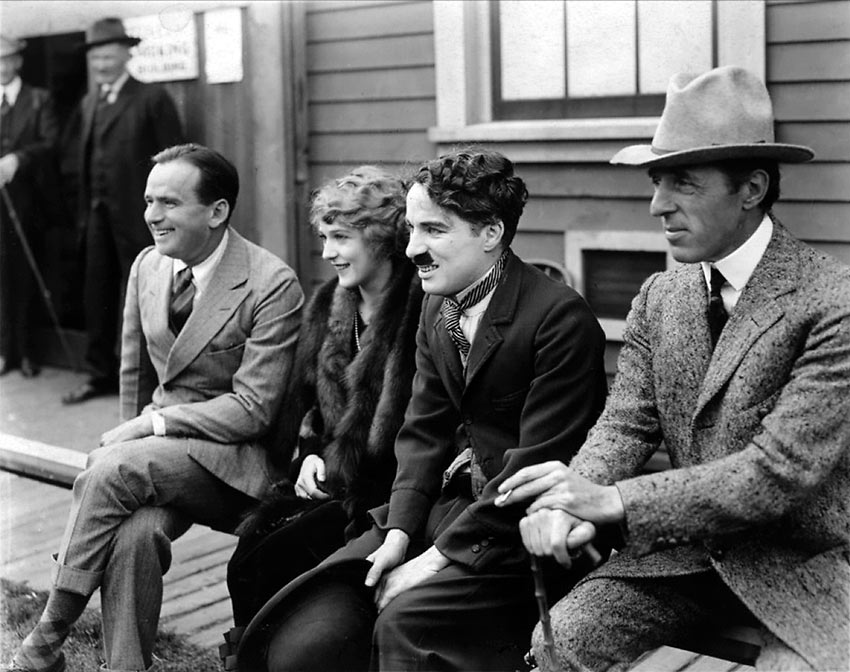
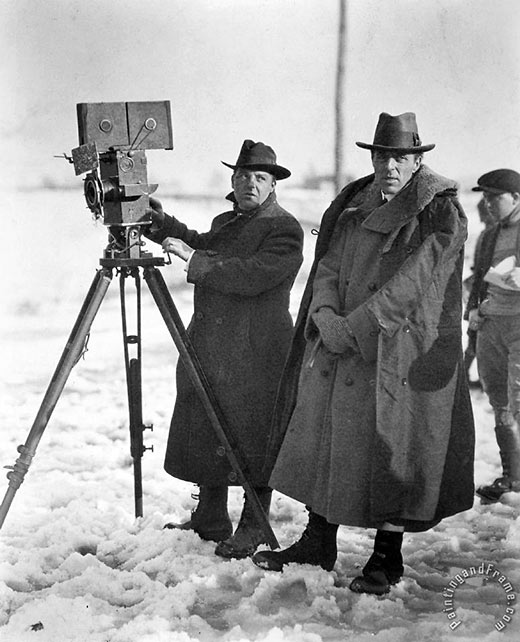
In June 1917, Chaplin signed up with First National Studios, and then built Chaplin Studios in Hollywood. He formed United Artists in 1919 along with the world’s first movie star, Mary Pickford (often times simply referred to as “Little Mary,” or ‘’America’s Sweetheart”), popular Hollywood swashbuckling actor Douglas Fairbanks (who was married to Pickford), and film director, D.W. Griffith (who created the very visual language of film used today). They were the leading filmmakers of their day and wanted complete freedom in producing and distributing their films. Chaplin worshipped Griffith, later commenting, ‘We owe our very existence to him. ’
(Read more about D.W. Griffith’s innovations here.)
Chaplin’s Films
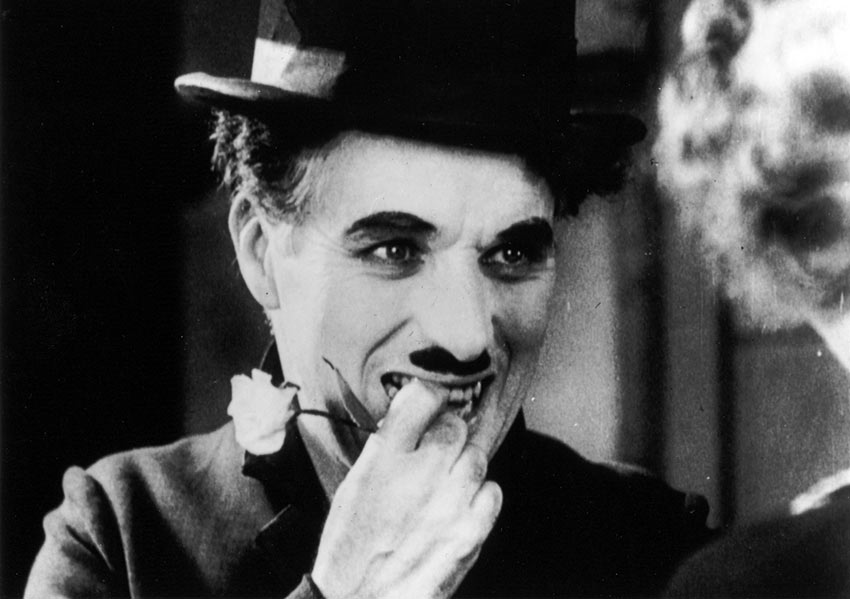
Life is a tragedy when seen in close-up, but a comedy in long-shot.
– Charles Chaplin
Features
1921 The Kid (Feature): The Little Tramp cares for an abandoned child, but events put that relationship in jeopardy. Chaplin’s first feature at 60 minutes in length, with regular Chaplin player Edna Purviance, star of many of his shorts, and a young, endearing Jackie Coogan, who would grow up to be Uncle Festus in the Adam’s Family TV series. Coogan was discovered in 1919 by Chaplin, and soon after the release of The Kid, Coogan-mania was in full force, spawning a wave of Jackie merchandising. It wasn’t until his 21st birthday, after his father’s death, he found he was virtually broke, with no money left from his work as a child actor. Under California law at the time, the earnings of the minor belonged solely to the parent. Coogan sued his mother and former manager, and, in 1939, the Coogan Law was established to protect future young actors from the same terrible situation. By modern day stands, the The Kid borders on the maudlin, pulling on all heart strings, but the overall result is remarkably emotionally effecting.
1923 A Woman of Paris: A Drama of Fate (Feature): A kept woman runs into her former fiancé and finds herself torn between love and comfort. After seventy films in which he had appeared in every scene, Chaplin is unbilled and unrecognizable as a porter at a railroad station. His first break from comedy, the film is a valentine to Edna Purviance, to whom he promised that one day he would make a feature film with her in the lead role. Still ahead of its time, the dark drama with its stark, groundbreaking sexual overtones, flopped with the general audience. It was, however, highly influential for film directors; in particular, the German-Hollywood director, Ernst Lubitsch. The film initially feels like conventional melodramatic, but with a closer look you see how Chaplin has overturned all the stereotypes of the time. The heroine is a courtesan. The hero is a mother-dominated weakling. And the seductive bad guy is charming, considerate and amusing. After Purviance’s retirement, Chaplin continued paying her salary until her death. Chaplin, at 86, worked on the film again, composing a new musical score. Some critics felt it was a kind of reconciliation with a film which the public had rejected, though he himself remained intensely proud of it.
1925 The Gold Rush (Feature): The Little Tramp is a lonely prospector who ventures to the Klondike looking for gold. He gets mixed up with some burly characters and falls in love with the beautiful Georgia Hale, playing a rather hardened, dance-hall girl. He tries to win her heart with his kindness, but with no success. According to David Robinson, the idea came to him when viewing stereoscope pictures of the 1896 Klondike gold rush, and was struck by the image of an endless line of prospectors snaking up the 2300 feet Chilkoot Pass, the gateway to the gold fields. For two weeks Chaplin and his unit worked on location in the snow country of California’s Sierra Nevada, recreating the historic image of the prospectors struggling up the pass through mountain snow. Six hundred extras were used, with many vagrants and derelicts from Sacramento. The film was an important box office success after A Woman of Paris had bombed with audiences. In a revised version in 1942, Chaplin composed an orchestral score, edited the film a bit and replaced the title cards with a commentary which he spoke himself. In this clip, The Little Tramp has fallen asleep while waiting for the dance-hall girl and her lady friends to arrive for a New Year dinner in his little cabin. The ladies had forgotten about the party and never arrive. The Little Tramp dreams about how the party could have been, and does perhaps his most famous bit: ‘the dance of the rolls,’ with just forks and rolls. Audiences were so thrilled by the scene that often times they demanded theatres to stop the film, roll it back and perform an encore:
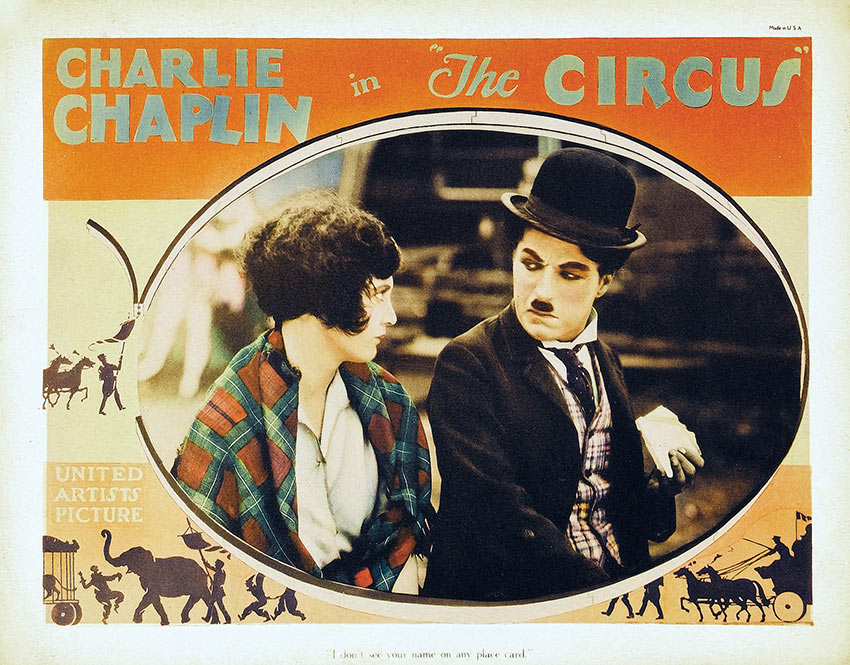
1928 The Circus (Feature): The Little Tramp finds work and the girl of his dreams at a circus. When speaking with Chaplin’s son, the most gracious Eugene Chaplin, I asked him what was his father’s favorite of all his films. Eugene replied, he never really said, but it wouldn’t be The Circus for it’s his only feature that he doesn’t mention in his autobiography. I put on a brave face, as The Circus is one of my favorites of his films. Perhaps sandwiched between the enduring masterpieces, The Gold Rush and 1931’s City Lights, it felt light upon comparison. Nevertheless, it too is a masterpiece which Chaplin wrote, directed, produced, acted in and edited. Later he composed the musical soundtrack, along with an opening song, “Swing little girl” where he actually sings.
The film subsides with the Little Tramp’s trademark closing:
1931 City Lights (Feature): The Little Tramp falls in love with a sightless flower girl and desperately accumulates money to help her medically regain here sight. In the middle of City Lights’ production, the advent of sound recording blew through Hollywood like a storm. Initially this induced a disturbing stylistic turn-around in the medium. The silent film was at its zenith; German director F.W. Murnau, famous for his fluid (‘unchained camera’), had already made The Last Laugh in 1924, a film so visually expressive that there was not one single title card used throughout the entire movie. The new sound equipment was primitive, where the camera was placed by a clunky recording apparatus, leading to many static shots. Broadway actors and stage directors poured into Hollywood for the new opportunity. For many of the silent era stars, though, this proved to be tragic, in particular for foreign language speakers unable to continue with their careers in English. Plus, the quality of the sound recording was so substandard that the voices of major stars, such as heartthrob John Gilbert, produced laughter from the audience. Gilbert already had a high-pitched voice, in contrast to his leading man image, and the primitive sound recording made his voice seem even higher. Chapin faced a dilemma, should he shut down City Lights’ production or continue making it a silent film? Lucky for us, he chose to march on with the silent film revision. City Lights was a stunning success with both critics and the movie going audience. The flower girl is played by Virginia Cherrill, a Chaplin discovery, who semi-retired from acting when she married Cary Grant; a union that would last for barely a year. The ending close-up, along with the final close-up in Ingmar Bergman’s Wild Strawberries, is among the cinema’s most moving endings:
1936 Modern Times (Feature) The Little Tramp struggles to live in a modern industrial society with the help of a young homeless woman. Chaplin’s last ‘silent’ film, filled with sound effects, an orchestral music score, and the milestone of the Little Tramp speaking for the first time (actually singing), was made when everyone else was making talkies. The Little Tramp turns against modern society, the machine age and progress. He first appears on the screen, frantically trying to keep up with a production line. He is selected for an experiment with an automatic feeding machine, but various mishaps leads his boss to believe he has gone mad, and Charlie is sent to a mental hospital. When he gets out, he is mistaken for a communist, sent to jail a second time, but foils a jailbreak, and is let out again. Chaplin co-stars with Paulette Goddard, with whom he later secretly married. Controversy struck when Films Sonores Tobis accused Chaplin of stealing the factory scene from French director René Clair‘s À Nous la Liberté, and filed a plagiarism lawsuit. Clair was against the lawsuit, and mainstream audiences didn’t notice or seem to mind:
Audiences hear Chaplin speak, or sing rather, for the first time in this bit:
The film ends with Chaplin’s classic ending, but with a twist due to being with Goddard:
https://youtu.be/J3aQkfIvx6k
1940 The Great Dictator (Feature) Dictator Adenoid Hynkel tries to expand his empire while a poor Jewish barber tries to avoid persecution from Hynkel’s regime. Chaplin’s first full “talkie” stirred controversy where he plays a humorous caricature of Adolf Hitler, with many thinking that it was in bad taste. Truth be told, the release of the film was held back by long delays in production (primarily due to building innovative miniature sets), and by completion, Hitler was no longer considered a joking matter. Chaplin played two roles, Hinkel, a parody of Hitler, and the Little Tramp as a Jewish barber. Paulette Goddard is cast again as his co-star, and the underrated Jack Oakie, in a supporting role as Napaloni (a parody of Mussolini). The film was a smash hit. It has been said that Chaplin’s character was ballet, while Buster Keaton’s acrobatic. I regard them equally as the greatest comic silent film directors. In this clip Chaplin’s character performs balletic magic:
1947 Monsieur Verdoux (Feature) A suave Bluebird-like man supports his family by marrying and murdering rich women for their money, but has some occupational hazards when he seduces comedic legend, Martha Raye. Verdoux goes to the gallows with a supreme contempt for the laws and norms of the society which he blames drove him to such desperate extremes. Monsieur Verdoux bombed with audiences. According to Richard Brody, ‘Chaplin had lost his popularity, quickly, between 1940, when the “The Great Dictator” was released and ranked among the highest-grossing films ever, and 1947, with the release Monsieur Verdoux. What had changed were Chaplin and the United States.’ Further controversy was fueled when Chaplin bought the premise of Monsieur Verdoux from Orson Welles. (The film’s credits list ‘original story written by Charles Chaplin, ‘based on an idea by Orson Welles.’) Welles was incensed that he did not receive a more prominent credit, and that Chaplin froze him out of the creative process. Sadly, Monsieur Verdoux flopped with the audience, nearly sinking United Artists. Today the film is considered a towering masterpiece.
1952 Limelight (Feature; UK) A fading comedian and a suicidal ballet dancer look to each other to find purpose and hope in their lives. Chaplin cast the unknown Claire Bloom as his leading lady, which propelled her to stardom. He aimed for a more serious tone, regularly using the word “melancholy” when speaking about the film. Stylistically, the final product felt a little dated with facile physiological depth, but today the sentimental drama is considered a major Chaplin film and a great pleasure to watch. Limelight featured a short appearance by Buster Keaton, whom Chaplin cast as his stage partner in the famous dressing room scene. This marked the only time the comedians worked together. Keaton called Chaplin “the greatest silent comedian of all time.” Orson Welles, no stranger to big personalities, commented that for Chaplin to imagine his own death on stage was a supreme act of egotism. Limelight was heavily autobiographical, alluding to Chaplin’s childhood, but also to his loss of popularity in the U.S. It was a family affair which included in the cast his five oldest children and his half-brother, Wheeler Dryden:
1957 A King in New York (Feature; UK) A recently-deposed European monarch seeks shelter in New York City, where he becomes an accidental television celebrity and is later wrongly accused of being a Communist. By this time Chaplin was disappearing from the public eye and A King in New York was not even released in the United States at that time. Those who did eventually see it, dismissed the narrative as preachy and self serving. It’s a movie still worth a look, and a real treat for auteurists.
1959 A Countess from Hong Kong (Feature; UK): A Russian countess illegally climbs aboard a luxury liner to reach America for a better life. She hides in the cab of a diplomat billionaire. Perhaps the most bizarre threesome to ever work on the same film together: Chaplin, the iron clad director, Marlon Brando, the temperamental method actor who could improvise on the spot, and Sophia Loren, the world-famous actress, who did not get along with Brando, especially when doing a love scene and commented, “Did you know you have black hairs up your nostrils?” Chaplin’s style was to act out each of the different roles, and then instruct the players with “OK, do this.” Brando bristled and threatened to quit. But he found in the 76 year old Chaplin a man whose ego was actually greater than his own, and eventually succumbed to his will. “I agreed to be a marionette in his hands. I figured he must know something I didn’t.” Chaplin had written part of the script 34 years earlier, and composed the theme song, ‘This is My Song.” Audiences were disappointed to find that Chaplin only played a cameo role as the ship’s steward. In many respects the buildup to the release of the film was more exciting than the movie itself. See the trailer here.
It was his first and only foray in shooting in color and widescreen. It was also his final film. The reviews ranged from dismissive to savage. Chaplin was happy to return to the harmony of family life in Corsier-sur-Vevey.
Shorts
1921 The Idle Class (Short): Chaplin plays two roles, the little Little Tramp and an upper-class, unrepentant drunk. In this clip the upper-class drunk forgets to wear his pants and tries not to be seen by any one:
https://youtu.be/zxavuHxun0s
Later, he learns his wife is leaving him due to his drinking; where shot from behind he appears to be sobbing:
1917 The Immigrant (Short): The Little Tramp is an immigrant who endures a challenging voyage and gets into trouble as soon as he arrives in America. Chaplin used the similar shot from the ‘behind gag’ in The Idle Class; this time appearing to be vomiting over the side of the vessel:
Special thanks to Chaplin’s World for their assistance in this article, and to My Switzerland for making my journey to Vevey possible.
Stay tuned for Part 3 where Ed Boitano addresses Chaplin’s private life.

